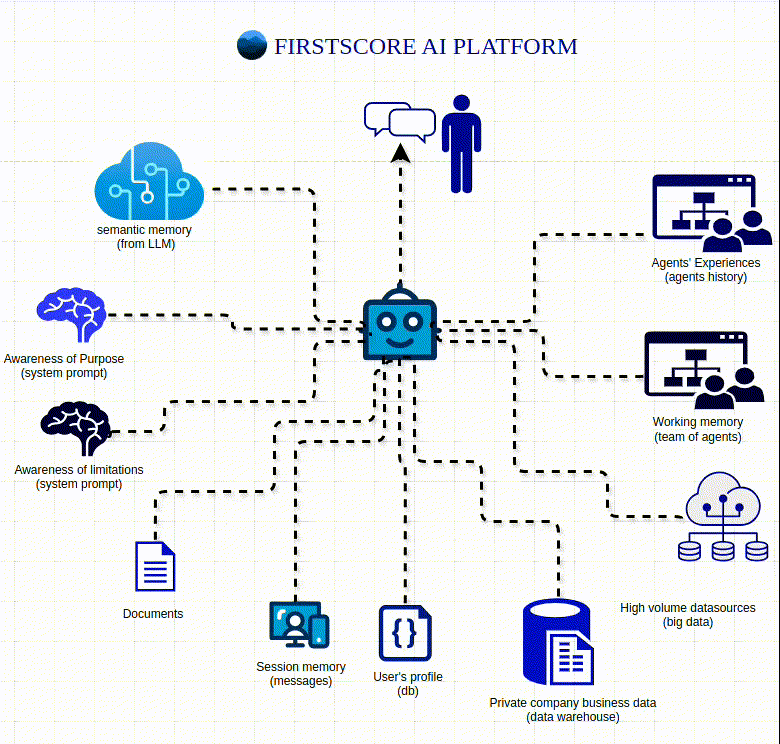Memory Management in Intelligent Solutions: Key Types of Agent Memory
2025-04-24 • by Your Name Here

Memory Management in Intelligent Solutions: Key Types of Agent Memory
Memory management is a crucial challenge in creating intelligent solutions. Here are the nine most important types of Agent memory:
- Semantic Memory – With a ready LLM model, we get a qualified, world-aware robot that excels at exams. It has the ability to “understand” and generate texts in specific languages, based on knowledge sourced from the internet by LLM models. A simple worker, sufficient only in simple, cheap systems. We aim higher.
- Goal Awareness – A system instruction guiding the model’s operation, it’s important to be precise. It helps quickly adapt a universal model to the specific goal it is intended to achieve.
- Constraint Awareness – Extremely important, the more we limit the model's operation, the less chance of hallucinations and undesirable results. Here, we can also use system instructions.
- Short-term Memory (Session Memory) – Covers the context of the current conversation: questions and answers within it. Sessions are isolated – they do not mix with thousands of others. Our platform manages hundreds of thousands of sessions in parallel, whether it operates in the cloud or locally.
- User Profile – Between sessions, we build a profile of each person we dialogue with. This allows us to know what was important a month ago and we can return to it. We understand user preferences and communication styles. These observations are stored and used — according to the consents provided.
- Memory of Private Company Facts – Knowledge that goes beyond LLM models, often confidential. Our agents, like employees, use it for customer service, support, or answering questions. We draw from documents and structured data, using embeddings for semantic information retrieval. We go beyond classic RAG – we take it a step further.
- High-Volume Data Knowledge – Big data, from which standard RAG squeezes little. We have always operated on large datasets. Our agents access selected records from millions of data in real time – in less than a second.
- Working Memory – Agents, working collectively on complex problems, exchange working information between functions. This happens fully scalably – we handle thousands of queries on millions of input records in parallel.
- Team Memory – If an agent does not know a situation that occurred with another agent, it taps into the collective knowledge of the entire team. This ensures each subsequent case is handled better.
Each of these points is intensively utilized in our platform.
For more insights, check out this LinkedIn post.